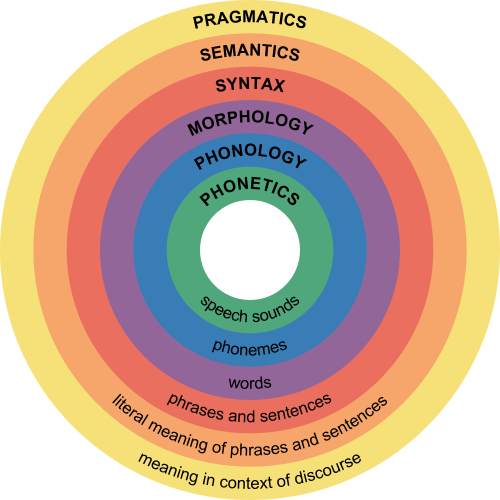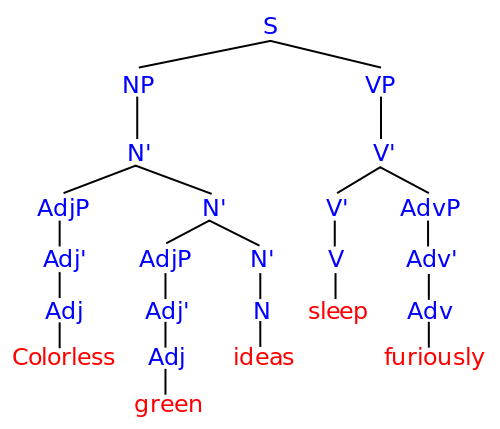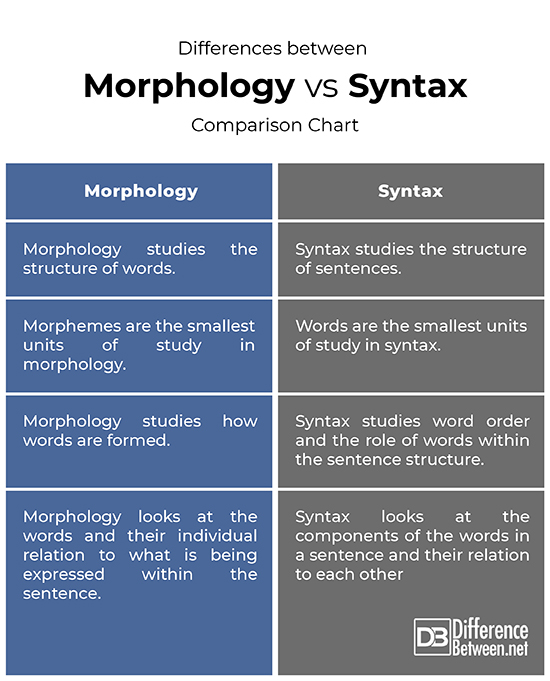Difference Between Morphology and Syntax
Morphology and syntax are an integral part of linguistics. They are subdivisions of the study of languages and together with phonetics, semantics and phonology contribute to the understanding of how a language is formed. Morphology deals with the understanding of how words are formed while syntax is focused on the way sentences are developed. Basically morphology is the study of the structure of words, while Syntax studies the structure of sentences. Together these disciplines help linguists understand how language works.

What is Morphology?
Morphology helps linguists understand the structure of words by putting together morphemes. A morpheme is the smallest grammatical, meaningful part of language. There are two different types of morphemes that form the basis of the words they structure. They are known as a free morpheme and a bound morpheme. A free morpheme is a single meaningful unit of a word that can stand alone in the language.
For example:
cat, mat, trust, slow ….. these are all free morphemes and stand alone.
A bound morpheme cannot stand alone, it has no real meaning if it is on its own.
For example:
walked, (ed) can not stand alone or unpleasant (un) is not a stand alone morpheme.
Bound morphemes that are part of the beginning of a word are known as prefixes and at the end of a word they are known as suffixes. Bound morphemes can also be grouped into into a further two categories.
Derivational – added to the base form of the word to create a new word. Look at the word able and let it become ability. In this instance the adjective becomes a noun. The word send as a verb morpheme becomes sender and a noun with the addition of er. While stable to unstable changes the meaning of the word to become the opposite meaning. In other words the meaning of the word is completely changed by adding a derivational morpheme to a base word.
Inflectional – are additions to the base word that do not change the word, but rather serve as grammatical indicators. They show grammatical information.
For example:
Laugh becomes the past tense by adding ed and changing the word to laughed.
Dog to dogs changes the word from singular to plural.
Swim to swimming changes the verb into a progressive verb.
All these examples show how morphology participates in the study of linguistics.
What part does morphology play in linguistics?
- Morphology studies the smallest meaningful parts of words.
- Morphology looks at the structure of words and how they are formed.
- It is the way linguists analyze the root, stem, prefix and suffix basis of words.
- Morphology looks at the internal workings of a word.

What is Syntax?
Syntax looks at sentences and how words perform in a sentence. Syntax looks at the rules and process of building a sentence and it looks at the word order and structure of a sentence. The meaning of a sentence in any language depends on the syntax and order of the words. A very simple basic sentence in English is made of a subject with a verb and a direct object.
For example:
The dog chased the cat. Change the word order to The cat chased the dog.
Now the word order has changed and so has the meaning of the sentence. Both sentences have the same words, but the meaning is different. It is by studying the proper order of words in phrases and sentences that the linguist gains a better understanding of the language as a whole. Native speakers of the language will intuitively know why a word sounds out of place or an incorrect tense has been used. A native speaker of a language learns the language from birth and is immersed in that language as the child grows and develops using this native ‘birth’ language.
Understanding how syntax works helps the linguist look at different categories of the sentence from the simple subject and predicate to more complex combinations. These different classes of words in syntax are known as parts of speech. Nouns, verbs, adjectives, adverbs and so on all define words and the role they play in sentences. Studies of syntax are based on the sentence and the minimal portion of study being the clause, with the words that contribute to this part of language. The sentence can be broken down or analyzed further by a study of tenses, noun or verb phrases and how they work orally and literally.
Syntax comes from Greek, meaning ‘to arrange together.’ In studying the sentence construction there are different complexities of words being used to create the sentences.
A simple sentence is made of a subject and a verb. The boy ran.
A compound sentence is made of a subject, verb, object, conjunction, subject and verb.
The boy ran a race and his sister did too.
A complex sentence has a dependent clause, subject, verb, object.
Although they were tired after running the race, the boy and his sister decided to go to the park for their picnic lunch.
In this way studying the parts of the sentence contribute to understanding the language and the value of words used in these types of sentences.
What part does Syntax play in linguistics?
- Syntax is the study of sentences and the words within the sentence.
- Syntax breaks down a sentence into clauses and studies words in the sentence according to their purpose of definition as a part of speech.
- Whole words are the smallest part of the study of syntax.
- Syntax looks at word order and how words work withing the structure of a sentence.
Differences between Morphology and Syntax
Words
Morphology studies words through the structure of the word and the memes that make up the words. Syntax studies words through their contribution to the meaning and order of the whole sentence or in the context of a phrase in a sentence.
Grammar
Morphology contributes to the understanding of words through the root word or the suffix and prefix that may be added. Syntax analyzes the meaning of the words within the sentence structure. Words have roles to play according to the parts of speech they are defined as and the role they play withing the sentence.
Bringing meaning to language
Morphology and syntax enable the linguist to analyze language structure. These definitions give understanding to word usage and to the breakdown of words within the development of languages. It is important for the deeper understanding of a language to know how different words and their order can give different emphasis to the language and word usage.
Learning syntax and morphology
It is important to be able to understand the laws defining language in order to have a better grasp of the mechanics of language. How do words work together and how do words influence the message and meaning of sentences. These are the ‘nuts and bolts’ of any language a linguist will study.
Differences between Morphology vs. Syntax: Comparison Chart

Summary of Morphology vs. Syntax
- Morphology and syntax contribute to the study of linguistics through the analyzing of words and sentences.
- Although they are both involved with the influence of words in language, one study looks at the word as its model to be studied, while the other looks at studying the words within a sentence and how their order and structure influence the meaning of the sentence.
- The study of syntax involves knowing the different parts of speech to understand the role that the word or words may be contributing to the sentence. Words can be used as nouns, verbs, adjectives and other parts of speech. Each individual word can be studied individually to understand how a suffix or prefix or the use of a word in a different context can change the meaning of the word.
- Morphology and syntax are tools used by the linguist to understand the way a language works. Different languages have their own specific word order and the linguist studies these differences withing the structure of syntax and morphology.
- Basically the simplest way of understanding the two linguistic terms is to look at morphology as the study of words and syntax as the linguistic study of words in sentences.
- Difference Between Lagoon and Bay - October 20, 2021
- Difference Between Futurism and Preterism - August 12, 2021
- Difference Between Dichotomy and Paradox - August 7, 2021
Search DifferenceBetween.net :
1 Comment
Leave a Response
References :
[0]Image credit: https://upload.wikimedia.org/wikipedia/commons/thumb/7/79/Major_levels_of_linguistic_structure.svg/500px-Major_levels_of_linguistic_structure.svg.png
[1]Image credit: https://upload.wikimedia.org/wikipedia/commons/thumb/a/aa/Syntax_tree.svg/500px-Syntax_tree.svg.png
[2]Nordquist Richard. Syntax grammar destinations and examples. Jan. 19th 2019. www.thought.com/syntax-grammar. Dot dash pub.company reviewed 29th June 2019.
[3]Julien. M. The relationship between morphology and syntax. Nov. 21st 2018. https://PDF Semantic scholar.org Pub 721abe20-281c-458c-9825ed37a3ee77bd Reviewed 29th June 2019

You have too many repetitions of “withing’ which I presume should read “within”. Thank you for a wonderful article.